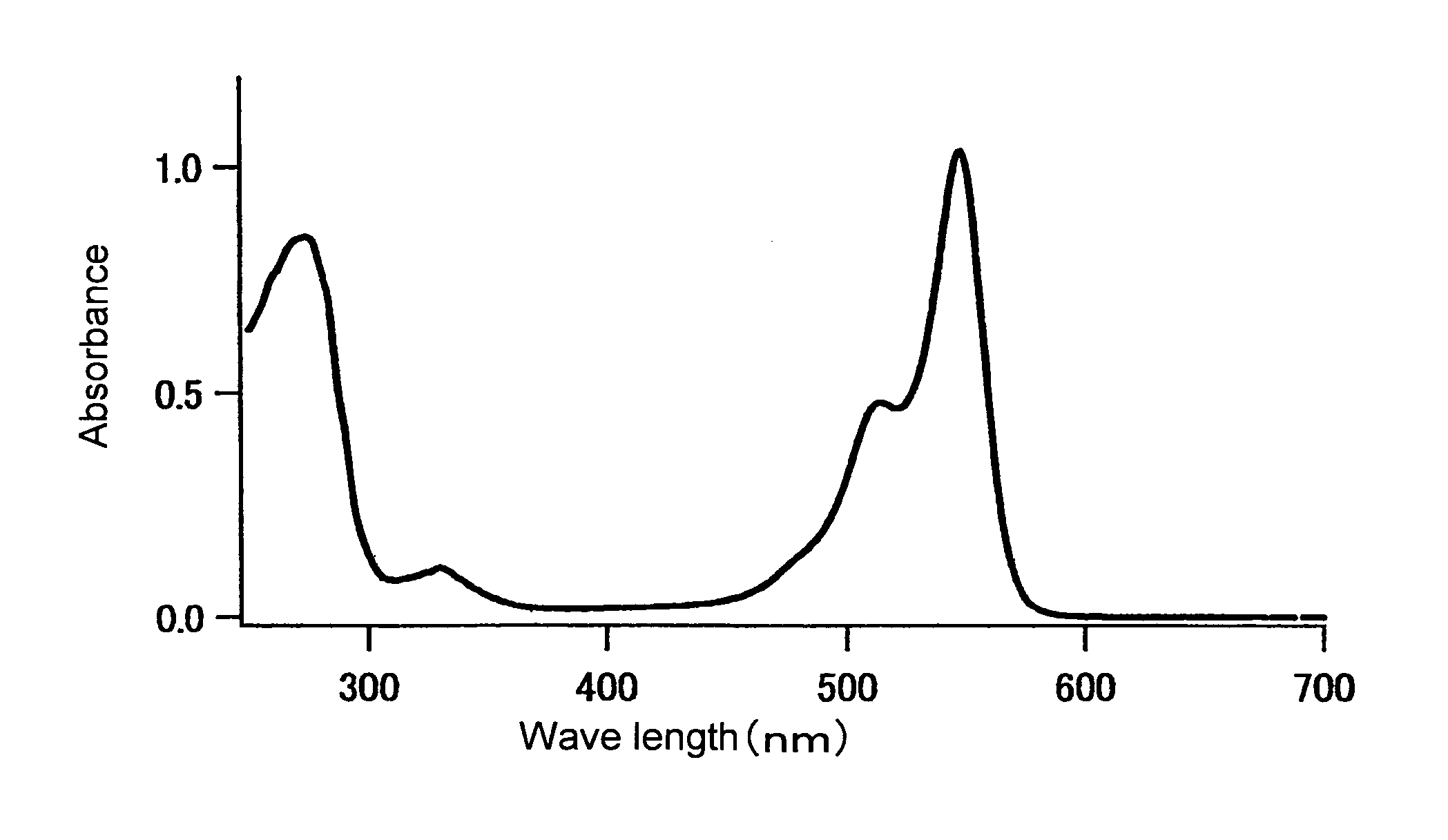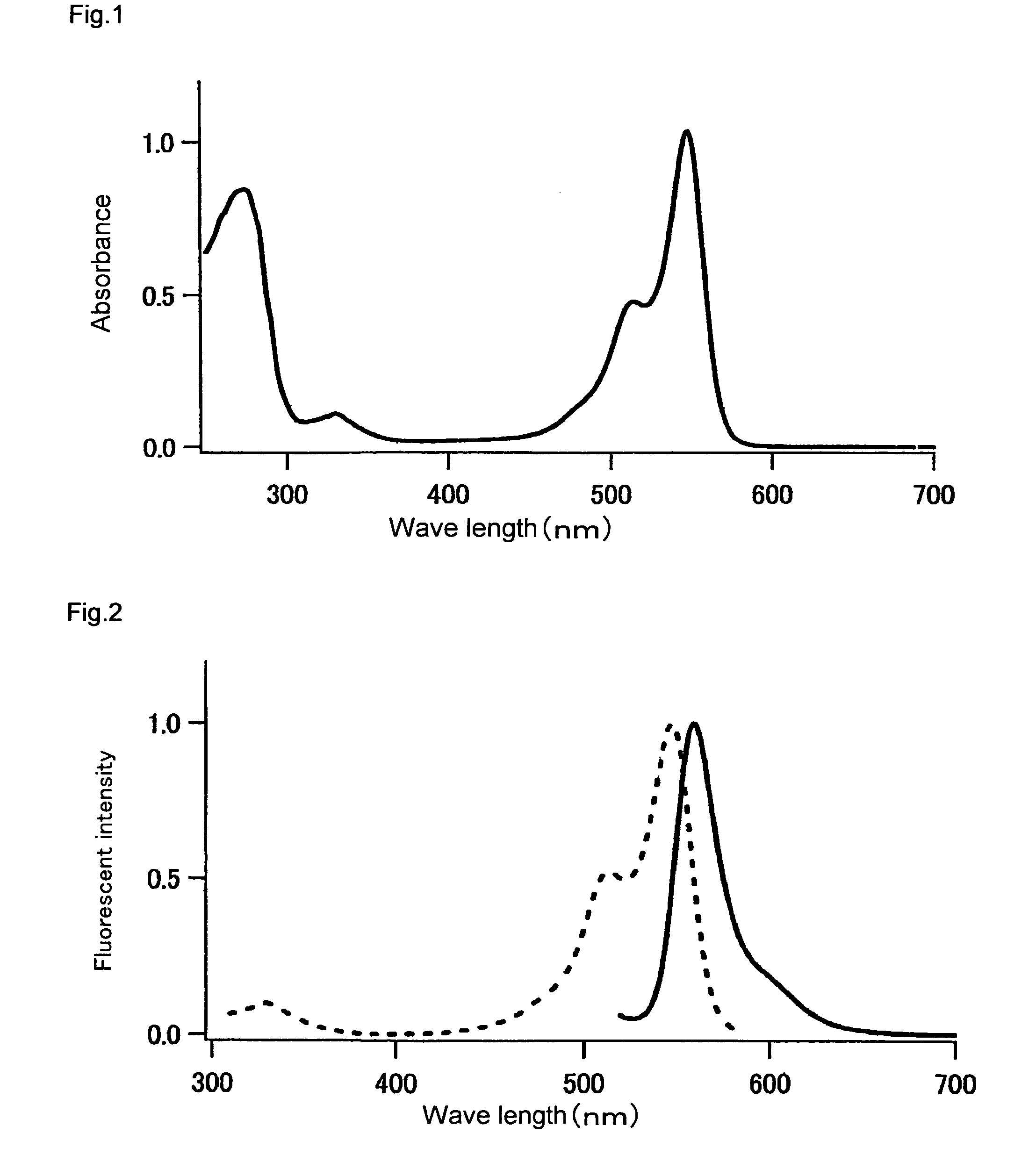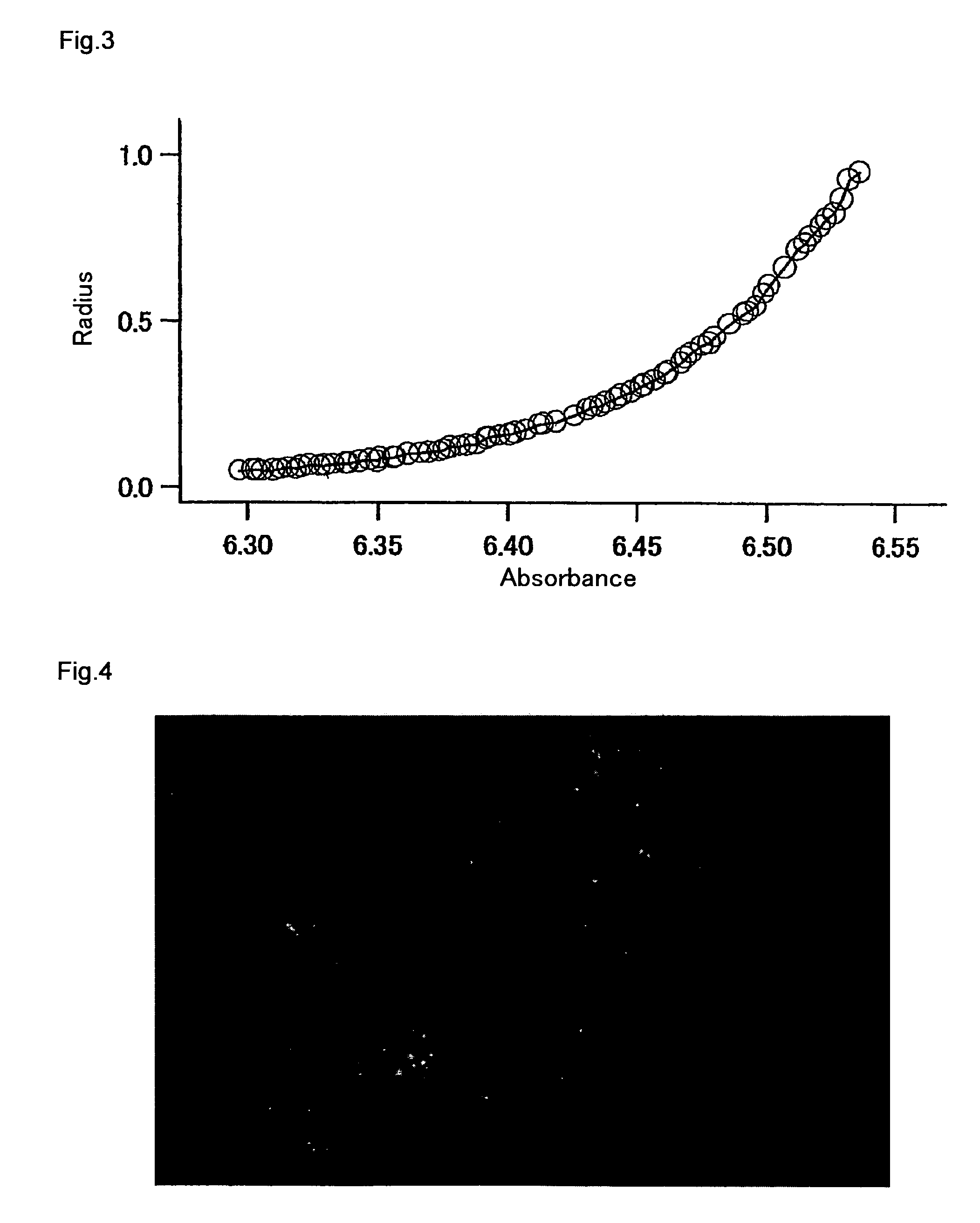Fluorescent protein
a fluorescent protein and protein technology, applied in the field of new fluorescent proteins, can solve the problems of difficult observation of frets, loss of original properties of molecules that cannot form multimers, and difficulty in forming multimers, and achieve the effect of broad excitation and fluorescence spectra
- Summary
- Abstract
- Description
- Claims
- Application Information
AI Technical Summary
Benefits of technology
Problems solved by technology
Method used
Image
Examples
example 1
Production of Multimer Formation-Inhibiting Mutant by Point Mutation Introduction
[0236]A multimer interface was predicted from the amino acid sequence of KO-1, and the amino acids of the multimer interface were substituted with other amino acids. Moreover, KO-1 was monomerized, so that it could maintain fluorescence properties. Point mutation introduction was carried out, using an Escherichia coli expression vector (PRSETB) (an expression vector having DNA encoding KO-1 described in International Publication WO03 / 54191), into which KO-1 had been inserted, and also using point mutation introduction primers. Specifically, multiple mutation introduction primers were simultaneously annealed on one side chain of a template plasmid, followed by elongation with polymerase. DNA fragments elongated with each primers were ligated to one another using DNA ligase in the same reaction solution, so as to obtain a product, whose portions other than the mutation-introduced portion were complementar...
example 2
Analysis of Fluorescence Properties
[0250]The fluorescence and absorption spectra of the mKO protein purified in Example 1 were measured as follows. The quantum yield and molar absorption coefficient thereof were calculated.
[0251]An absorption spectrum was measured using a 20 μM fluorescent protein and a 50 mM HEPES solution (pH 7.5). A molar absorption coefficient was calculated from the peak value of this spectrum. In the case of mKO, the fluorescent protein was diluted with the aforementioned buffer solution such that the absorption peak was found at 548 nm and such that absorption at 500 nm became 0.0025. Thereafter, the fluorescence spectrum obtained by excitation at 500 nm, and the excitation spectrum obtained by fluorescence at 590 nm, were measured. The fluorescence spectrum of DsRed (CLONTECH) was also measured under conditions wherein the absorption at 500 nm became 0.0025. The quantum yield of DsRed was set at 0.29, and the quantum yield of mKO was obtained.
[0252]The resul...
example 3
Measurement of Molecular Weight by Ultracentrifugal Analysis
[0254]An mKO protein solution with the composition consisting of 150 mM KCl and 50 mM HEPES-KOH (pH 7.4) was prepared. The molecular weight of mKO was determined by ultracentrifugal analysis. The above solution was centrifuged with an ultracentrifuge XL-1 (Beckman Coulter) at 25,000 rpm for 22 hours, so as to measure absorption at 540 nm around the maximum absorption (548 nm) of mKO. From the measurement results, the molecular weight of mKO was calculated to be 28 kDa (FIG. 3). This value was almost the same as 26 kDa predicted from the amino acid sequence, and thus it was confirmed that mKO exists in the form of a monomer.
PUM
| Property | Measurement | Unit |
|---|---|---|
| molecular weight | aaaaa | aaaaa |
| molecular weight | aaaaa | aaaaa |
| molecular weight | aaaaa | aaaaa |
Abstract
Description
Claims
Application Information
 Login to View More
Login to View More - R&D
- Intellectual Property
- Life Sciences
- Materials
- Tech Scout
- Unparalleled Data Quality
- Higher Quality Content
- 60% Fewer Hallucinations
Browse by: Latest US Patents, China's latest patents, Technical Efficacy Thesaurus, Application Domain, Technology Topic, Popular Technical Reports.
© 2025 PatSnap. All rights reserved.Legal|Privacy policy|Modern Slavery Act Transparency Statement|Sitemap|About US| Contact US: help@patsnap.com



